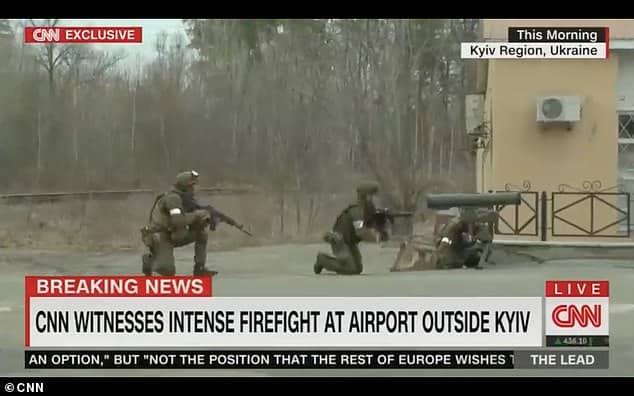Since the beginning of its invasion of Ukraine, the Russian armies have encountered many difficulties, partly linked to an obvious lack of performance and effectiveness of its own forces, but also to the exceptional combativeness and tactical Intelligence Ukrainians themselves. In fact, despite a very marked advantage in terms of firepower, technology and air capabilities, the first 3 weeks of this war in Ukraine were marked by a difficult advance of the Russian armies in the country, and losses of an intensity forgotten since the Second World War or the Korean War. Thus, in 24 days of combat, the armies of Moscow lost between 20.000 and 35.000 men according to estimates, including 6 to 9000 killed, but also more than 750 armored vehicles including 260 heavy tanks (documented), about fifteen combat planes and more than twice as many helicopters, as well as more than 500 logistics vehicles, i.e. 20% of the system initially deployed around the country, and nearly 10% of the personnel and equipment of the Russian armies themselves . Even his command was hard hit, with the confirmed loss of 5 generals (plus a Chechen general) including a Lieutenant General, the equivalent of our division generals, as well as nearly 3 dozen colonels and lieutenant-colonels, for most of the corps commanders.
If now the hypothesis of a global invasion of Ukraine, and the establishment of a government of convenience at the boot of the Kremlin seems ruled out, the Russian authorities have, it seems, engaged their armies in a any new strategy, potentially much more difficult for Ukrainian defenders to contain. To understand this evolution, and the risks that now weigh on Ukraine, perhaps in a less visible way but for all that much more pressing, it is essential to return to the 3 major phases which, until now, have marked this war. , and the Kremlin's strategy to subjugate Ukraine and its people.
Phase 1: the failure of the decapitation strategy
In the early hours of the conflict, on February 24, the strategy employed by the Russian armies seemed to be very effective. After convincing the Ukrainians that the bulk of the Russian push would come from the independent republics of Donbass with a view to seizing all of Luhansk and Donetsk Oblasts, Russian forces carried out three massive attacks which, somehow surprised the Ukrainian General Staff: one in the south of the country from Crimea to the Dnieper and the city of Kherson, the other to the Russian-speaking city of Kharkiv, and the third to Kyiv and the Ukrainian power . As we now know, the objective of this strategy was twofold. On the one hand, by taking massively Russian-speaking cities like Kharkiv and Kherson, the Russian armies hoped to be able to legitimize their intervention on the international and national scene, by showing scenes comparable to those that followed the intervention in Crimea in 2014. Furthermore, by a complex airborne action including the capture of the airfield of Hostomel in the north of Kyiv by the special forces, then by the deployment of a significant airborne force in Kyiv via this airport, Moscow wanted to take control of the all Ukrainian centers of power, and probably its political representatives, such as members of the Rada, the Ukrainian parliament, the mayor of Kyiv and President Zelensky.

This strategy proved to be a monumental error, since not only did the Ukrainian special forces manage to repel the Russian assault on Hostomel airport, annihilating the possibilities of a large airborne assault, but the cities of Kharkiv and Kherson did not welcome the Russian forces with enthusiasm, and opposed on the contrary a very important resistance, to the point that 3 weeks after the beginning of the operation, Kharkiv remains under Ukrainian control, and Kherson, although fallen into Russian hands, continues to be the scene of strong civil resistance on the part of its inhabitants. In the end, except in the south of the country to reach the Dnieper, the first phase of the Russian offensive was a resounding failure, which enabled the Ukrainian authorities to galvanize the morale and resilience of the entire population, but also to convince the Westerners, Europeans in the lead, that Ukraine will not fall as easily as anticipated, and that it was therefore necessary and useful to pursue a policy of severe sanctions against Russia and military support for the attacked.
Phase 2: the stalemate of the saturation strategy

75% of this article remains to read,
Subscribe to access it!
The Classic subscriptions provide access to
articles in their full version, and without advertising,
from 6,90 €.
Newsletter subscription
Register for the Meta-Defense Newsletter to receive the
latest fashion articles daily or weekly


[…] […]
[…] to reproduce the tactical plan implemented by the Ukrainian general staff. However, beyond the second phase of this Russian “military special operation” in Ukraine from…, the situation for these systems changed radically, as the Russian forces undertook to […]
[…] the beginning of the aggression against Ukraine, the Russian armies had already changed strategy 3 times for the overall conduct of operations…. First, during the first ten days of the operation, they employed a […]